Tips for Teaching Your Child to Love Art At A Young Age
Drawing, painting, and using art tools are amazing ways for your child to dabble in their creativity. You can begin to expose your child to drawing and painting as young as one year old, or even younger with some activities!
Here are some tips to get your child started in making their own creations!
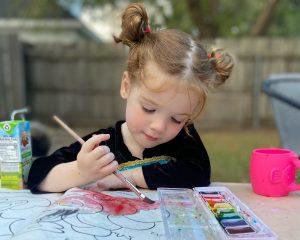
Designated Area (plastic lap tray, silicone mat, fabric cutting mat, outdoor picnic table, towel)
Set yourself up for success! Let’s be honest, no one wants their child spilling paint on the floor or getting marker streaks on the kitchen table. Have a plan and teach your child your expectations. If you are inviting your child to create art at the table, put down a towel, silicone mat, or large fabric cutting mat as your child’s workspace. Teach your child to stay in this area to create their art! Other options are plastic lap trays or outdoor kid tables. These types of surfaces can be easily wiped off, or you may choose to let them be designated art zones and be okay with them getting stained up!
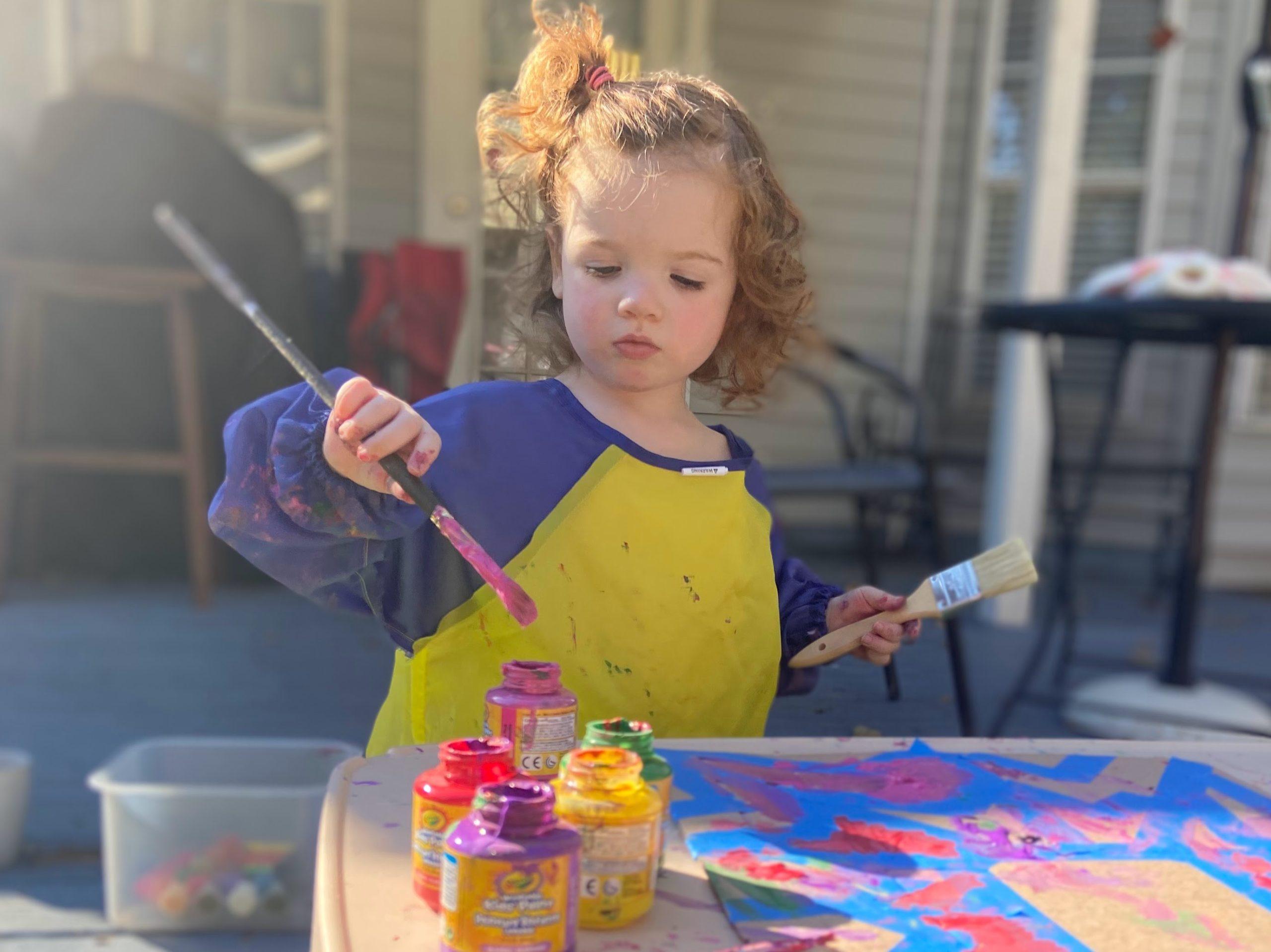
Art Smock or Play Clothes
Another way to set yourself up for success is to use an art smock or dress your child in inexpensive play clothes. All of the materials I will recommend are washable, but if you would like to completely bypass getting your child’s clothes messy, go ahead and have an art smock handy!
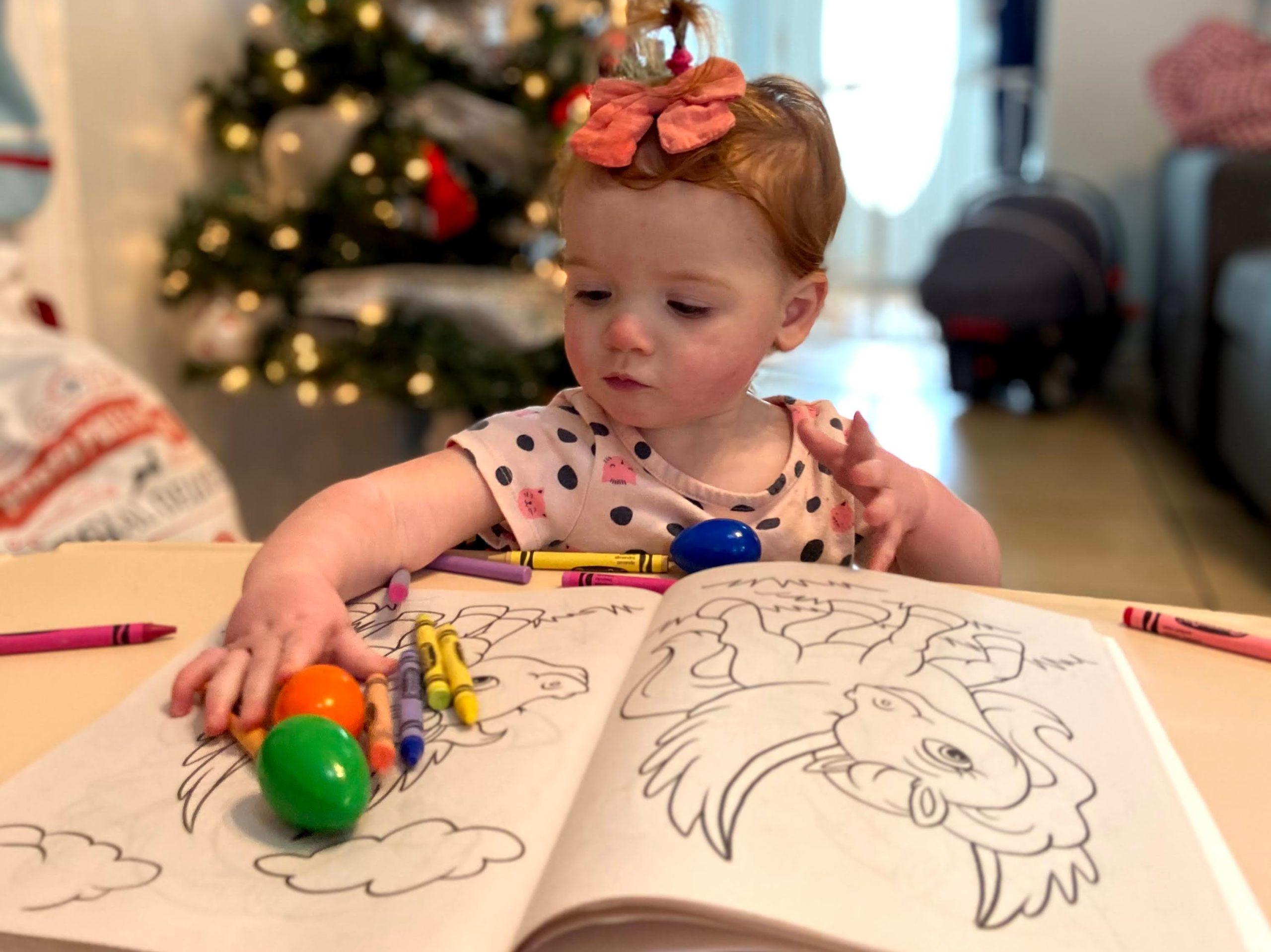
Baby Materials (baby crayons- egg crayons or chunky beeswax crayons, large coloring books, paint sticks)
I began exposing my oldest child to drawing and painting shortly after her first birthday. Egg crayons or chunky beeswax crayons are designed to be “first crayons”, and can easily be held in the palm of your child’s hand. They are also non-toxic for the little ones still prone to putting items in their mouths!
Animals, character pictures, and smiling faces are pleasing for your baby. Offer large coloring books with smiling animals or characters for your child to color on!
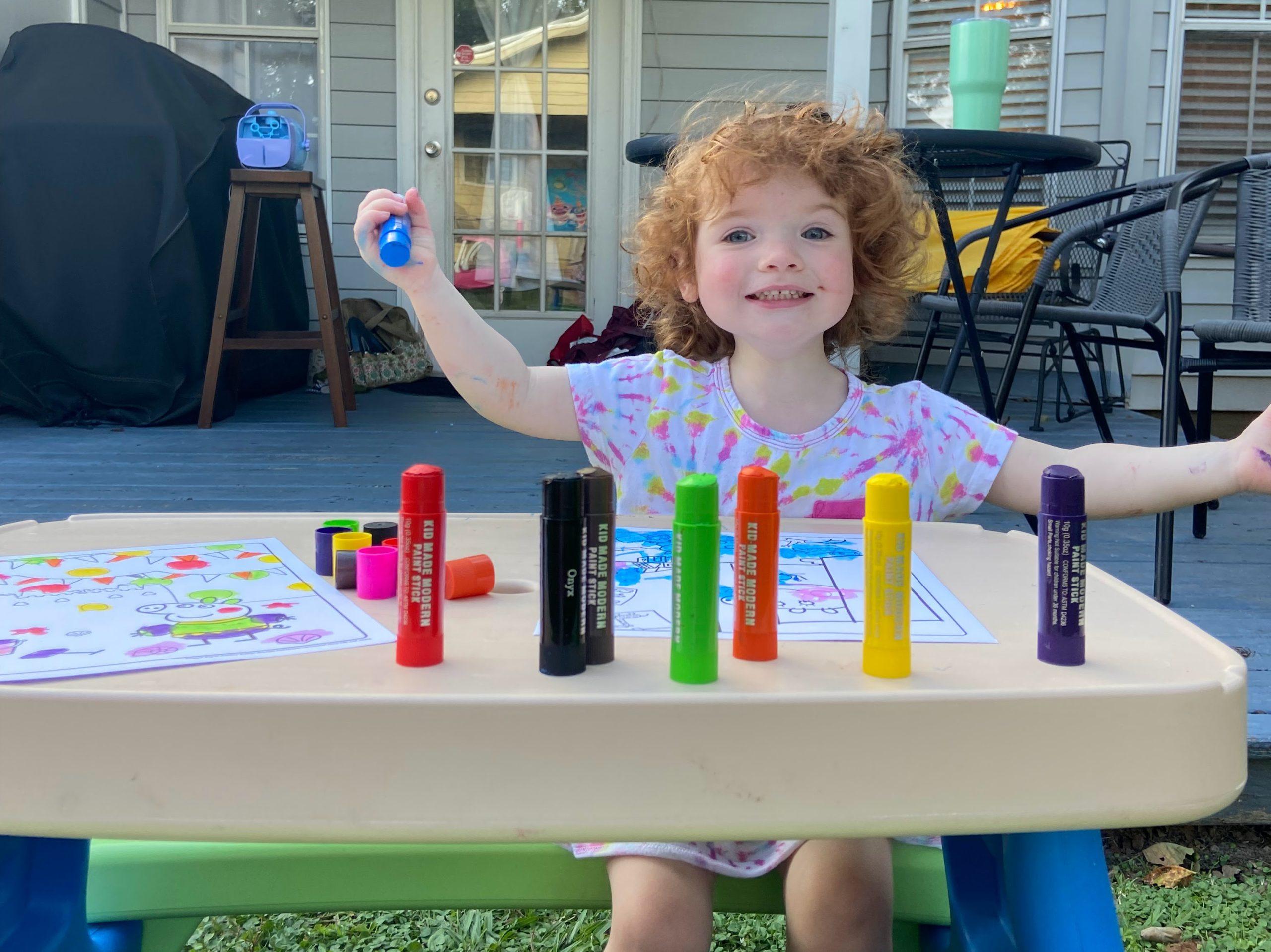
Paint sticks are another great beginning material for older babies (12 months and older). Paint sticks can be held in the palm of a child’s hand or fist. While they are easy for a baby to hold and use and are completely washable, paint sticks require a little more supervision than egg crayons and chunky crayons. Depending on the brand, paint sticks could have the tendency to smear and get messy, so be prepared!
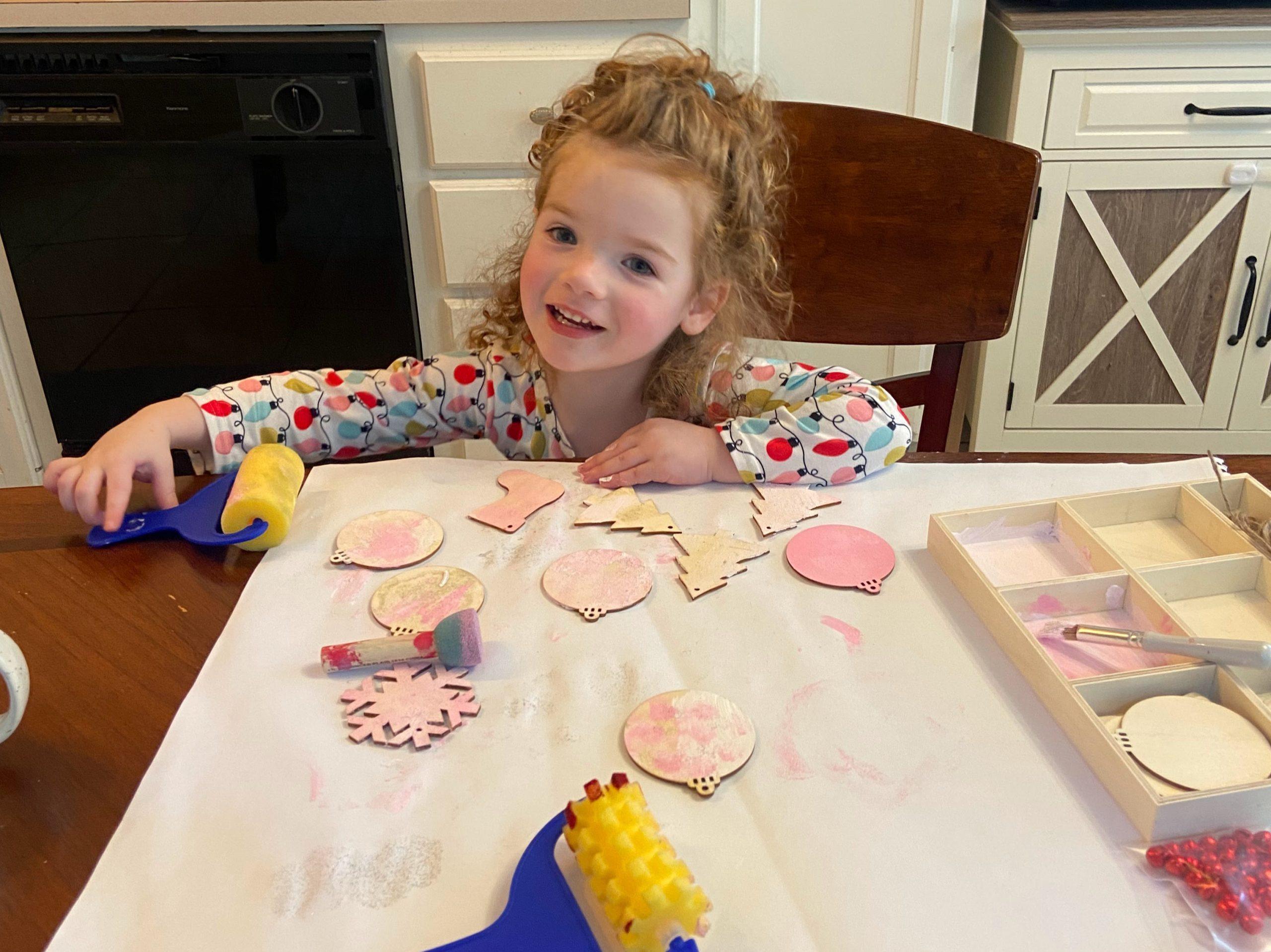
Toddler/Preschool Materials (watercolors, dot markers, washable paint, washable markers, twistable crayons, stencils, stamps, a variety of paint brushes and sponges)
As your child grows, they will be able to experiment with different materials and tools. Continue to keep the routine of a designated area, art smock, or play clothes as you try out different materials with your child. Dot markers, washable paint, washable markers, twistable crayons, stamps, and stencils are all fantastic materials to provide your child with to allow them to experiment! Pair the materials with large paper, cardboard, or coloring books in your designated area. If using washable paint, provide your child with a variety of paint brushes and sponges to experiment with!
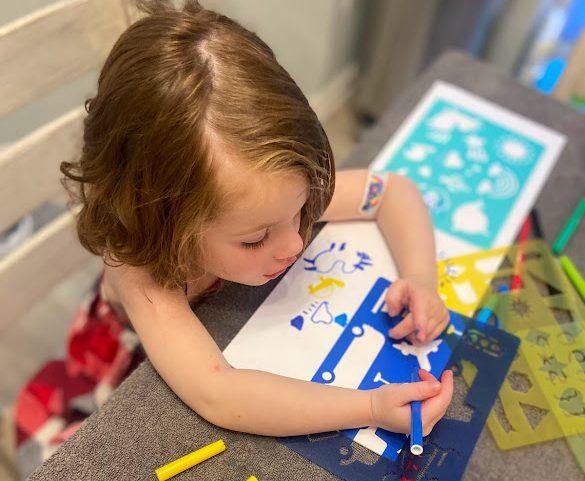
While these are appropriate and engaging independent activities, I believe that your child will love art and creativity even more if you sit down and participate alongside them!
Your child will greatly benefit from the quality time that comes with being creative with you. If you do not believe you are a creative person, give yourself some grace! Try to draw simple pictures with your child and enjoy bonding with them, making core memories of spending time creating something together!
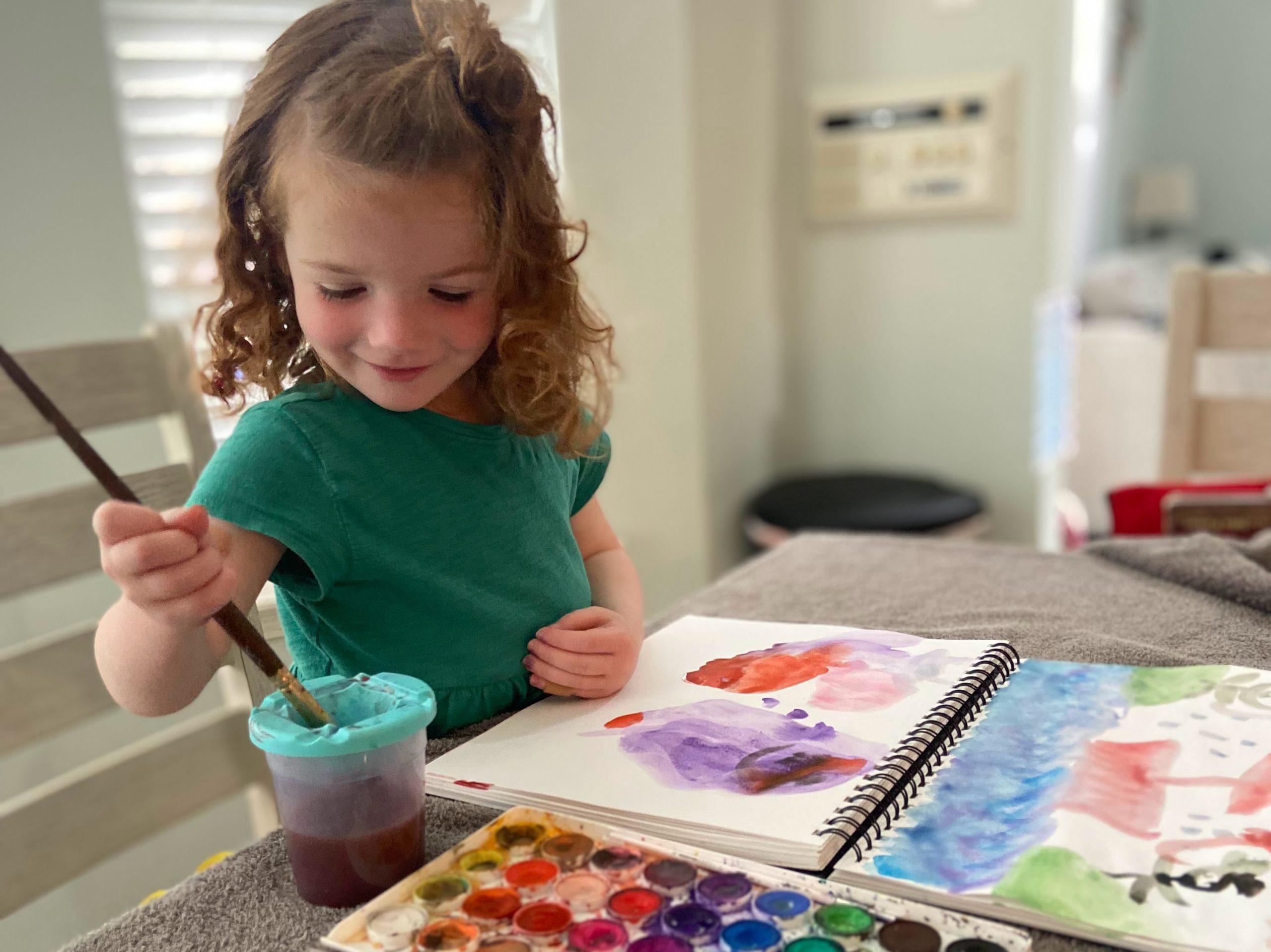
Watercolors and Spill Proof Cups
Watercolor pallets deserve their own section because of how amazing and easy they are to implement with young children. At first glance, watercolors may seem messy or a hassle, but they are surprisingly low maintenance with little to no clean-up!
First, watercolors are already in their own portable pallet with every color already ready to go. The setup is as easy as pulling out the pallet and opening up the lid. Next, you fill up a spill-proof cup with water. Give your child a paintbrush or two, and your set-up is virtually finished.
Watercolors are also special because all of the mixing happens within the pallet, and the brush self-cleans itself with every rinse. Unlike washable paint, which is way more inclined to a mess, watercolors don’t require any pouring, a separate plate or pallet for mixing, or even a paper towel to clean the brush.
Watercolors can be used on blank paper or even a coloring book. My daughter loves to use her watercolors in a color book in lieu of crayons or markers. A very young toddler can be very successful with watercolors!
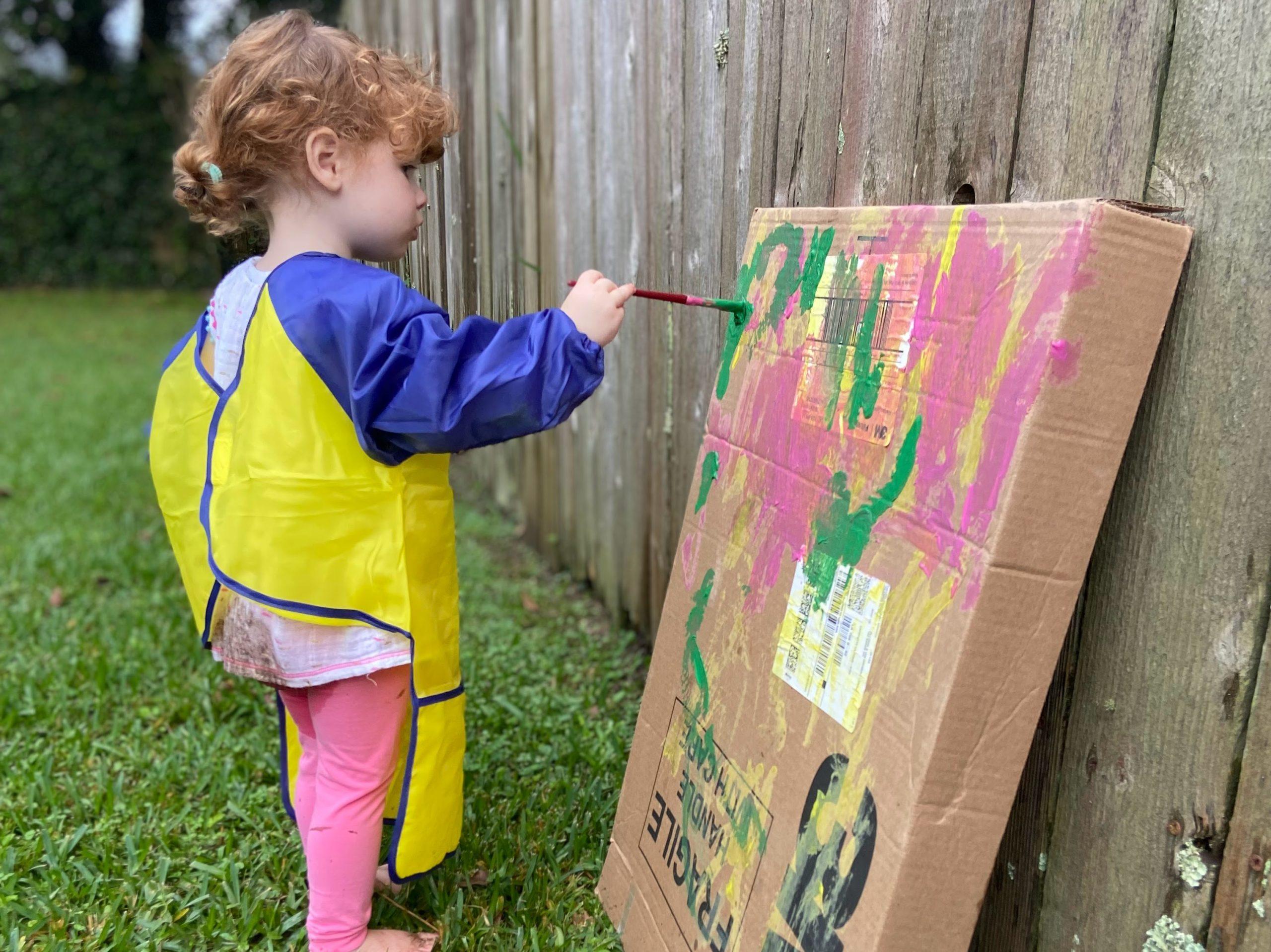
Think Outside the Box (or on a box!)
Drawing and painting do not have to be limited to paper! Cardboard, foam boards, canvas, rocks, wooden pieces, or plastic sun catchers are all great ways to provide your child with different surfaces and textures to draw and paint on! Going BIG every once in a while is also fun. Give your child a large box to paint on so they can experience less restriction and have more space for their creativity!
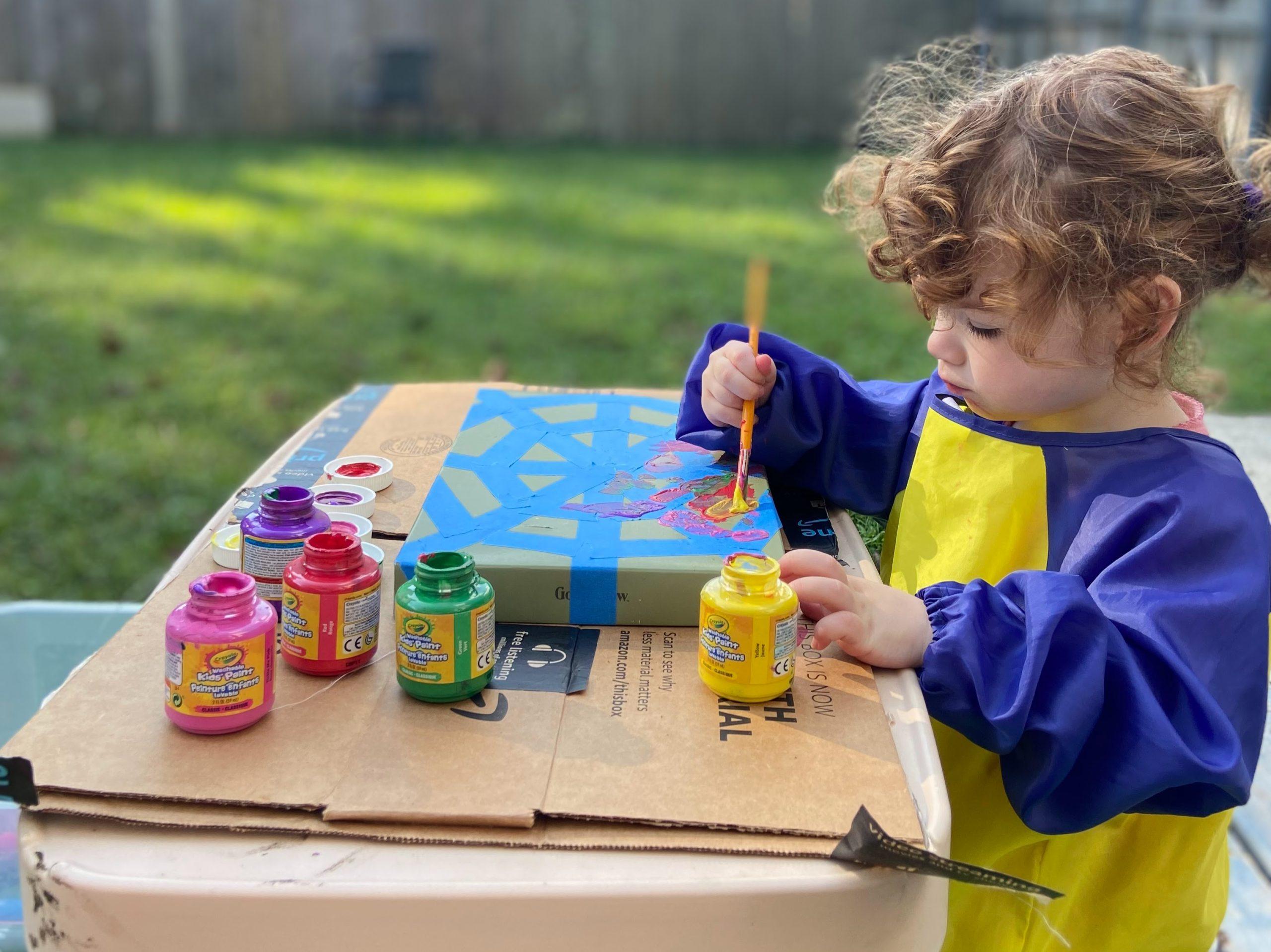
Tape Resist Art
Tape resist art is the act of taping off a design on your surface (usually cardboard or cardstock) with painter’s tape or washi tape, then painting the remaining blank areas of your surface. Wait for the paint to dry, then peel off the tape to reveal your design! Tape-resist art can be more abstract in its design, or it can be seasonal, such as taping off a heart, snowflake, spiderweb, or turkey.
For small toddlers, the adult should set up the tape for the toddler, so the toddler’s role in the activity is to paint the blank spaces. They will also love helping you peel off the tape when it’s time! Older children can set up the tape themselves, completely personalizing and customizing their art to their liking!
Smash Art
Smash art is a fun activity for babies and toddlers alike! It’s also a nice activity for mom because all of the mess is contained in a Ziploc bag! I have done this activity with my youngest daughter at only 8 months old!
First, insert a piece of cardstock or cardboard into a gallon-sized Ziploc bag. It’s important that the material is hard because if regular paper is used, the paper will get soggy. Next, lift up the top of the Ziploc bag and squirt a few blobs of paint at random paces onto the cardstock or cardboard. Seal up your bag, and tape it closed with painter’s tape. You may also want to tape the bag itself to the table to prevent it from slipping around.
Finally, plop your baby or toddler in front of the set-up, and give the direction, “SMASH!” Your child will have a blast with the sensory experience of smashing paint blobs and sliding the paint around. When they say they are done, take the cardstock or cardboard out of the Ziploc bag and put it in a safe place to dry! The result will be a fun piece of abstract art!
Modeling
When drawing with my toddler, I choose to always model drawing in the most basic way possible. This means stick figures, simple smiley faces, and animal heads with basic features. This is not the time to show off my drawing abilities, rather the purpose is to model drawing shapes, lines, and faces in a way that my toddler can mimic.
Drawing anything too advanced that she was not able to copy or draw herself would not allow her to feel any success when it was her turn to try. I wanted her to always feel that she could draw exactly what I was drawing. As she has gotten older, she has naturally started to add more detail and creativity to her drawings. There have been times when she says “I don’t know how to draw ___.” I’ll use this moment to draw a very basic image of that object, with the same mindset that she can mimic my modeling to practice, and add onto it when she is ready!
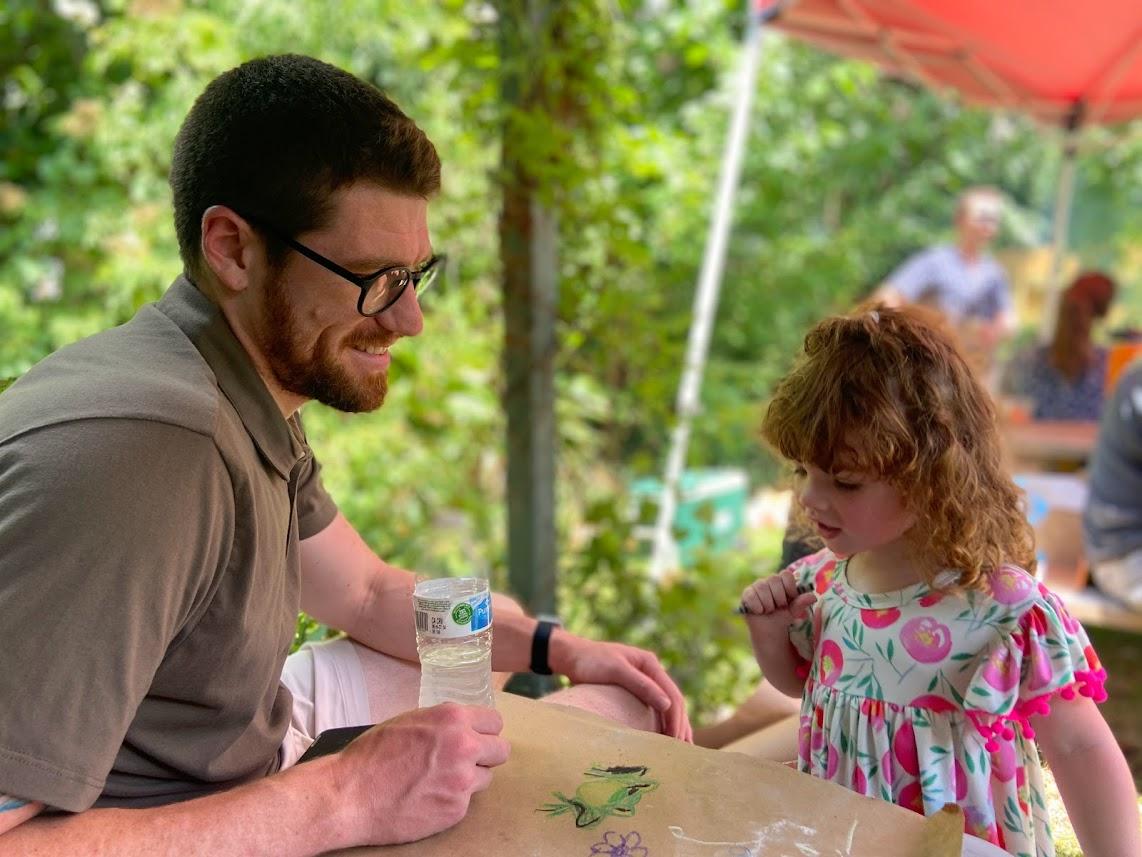
Create Together!
Your child will learn to love art if they see that you love it, too! They will benefit in countless ways from the shared time with you. Take the time to sit, draw and paint with your child! Try something new together, and don’t be too hard on yourself or your child if something doesn’t look the best. Give yourselves some grace, and enjoy creating together! 🙂





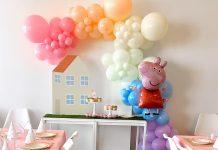





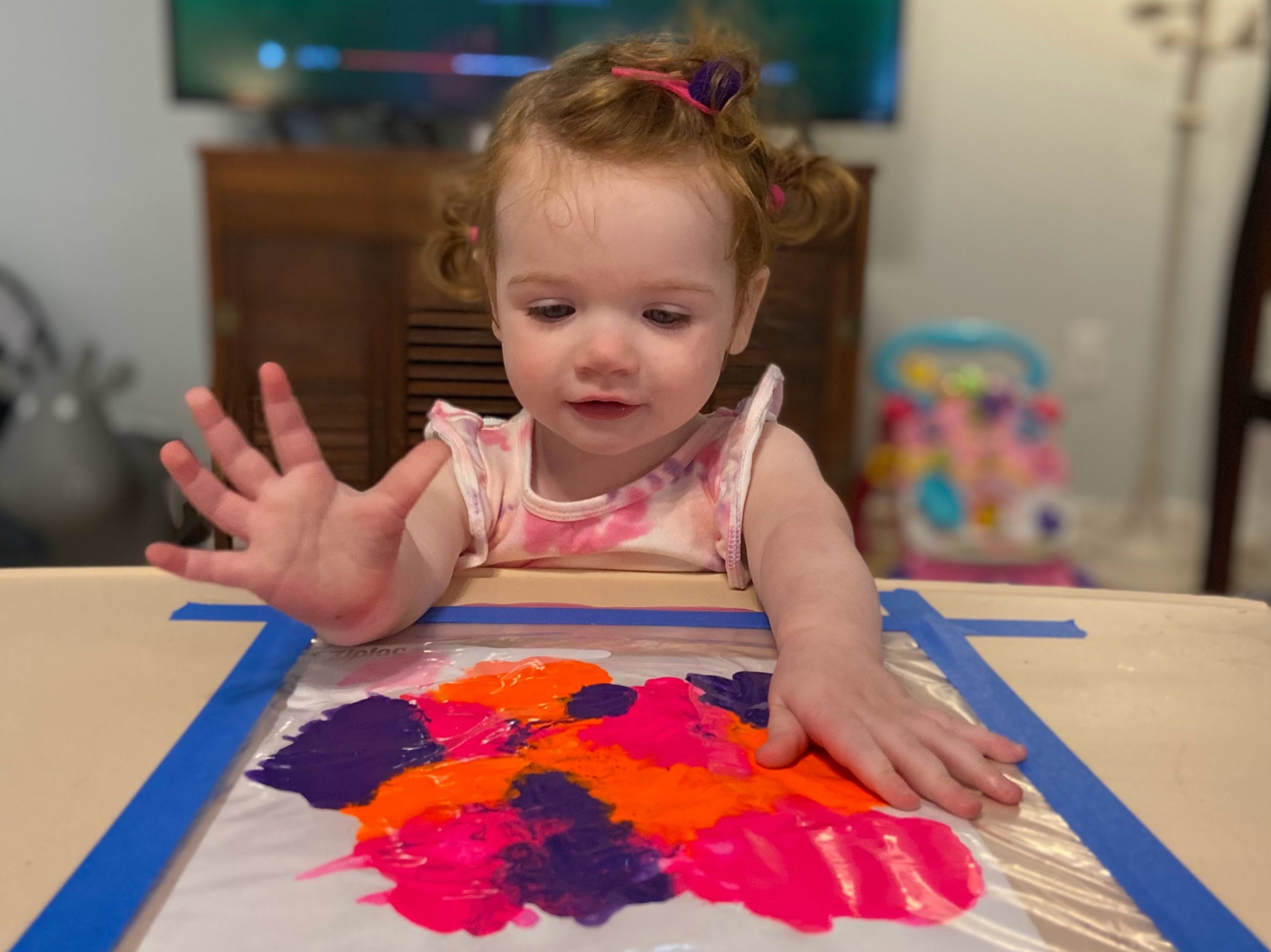
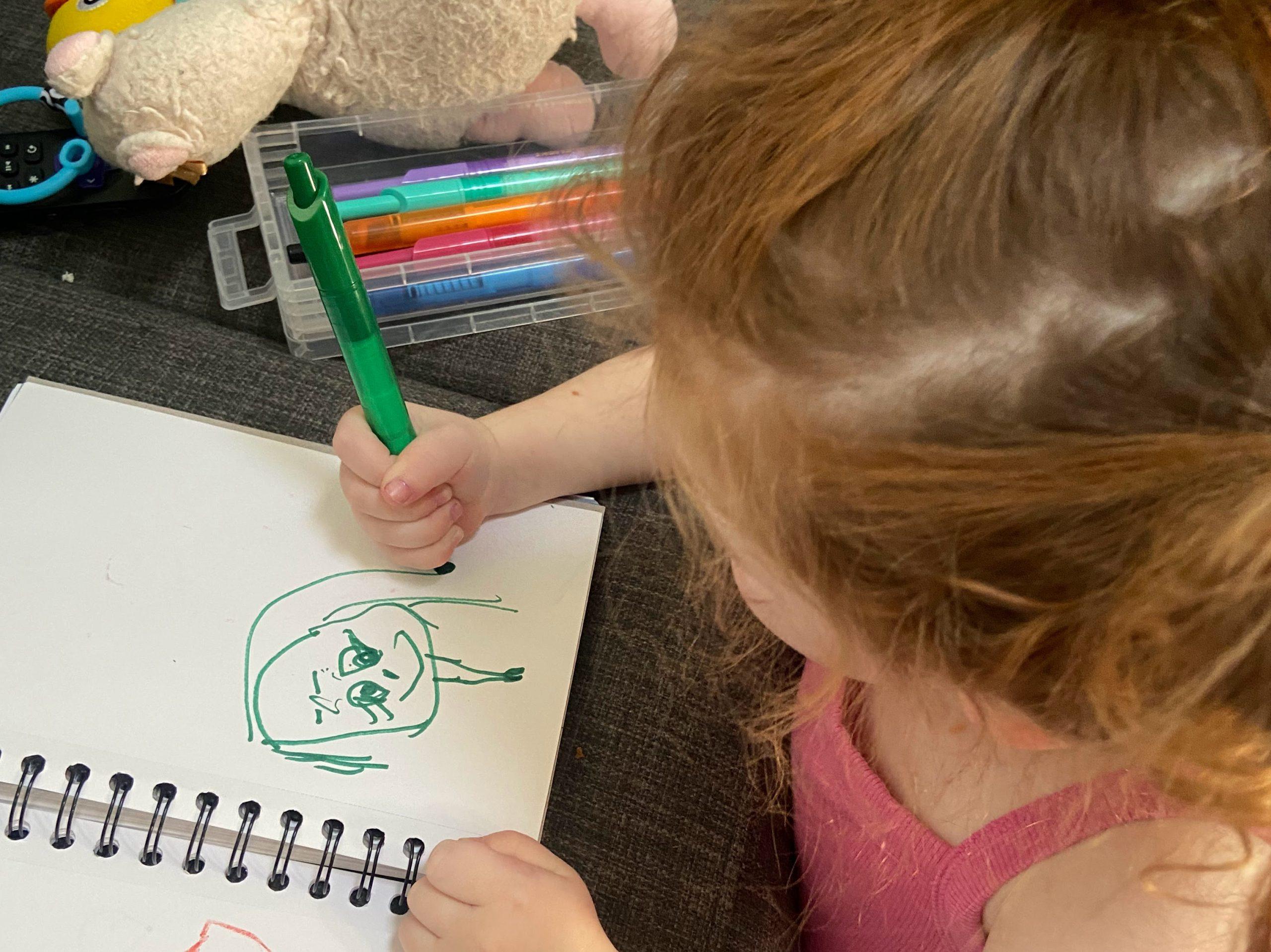








Well said Allison; you’ve done an excellent job with Leigh and she is very creative both in her drawing and conversation(vocabulary)!